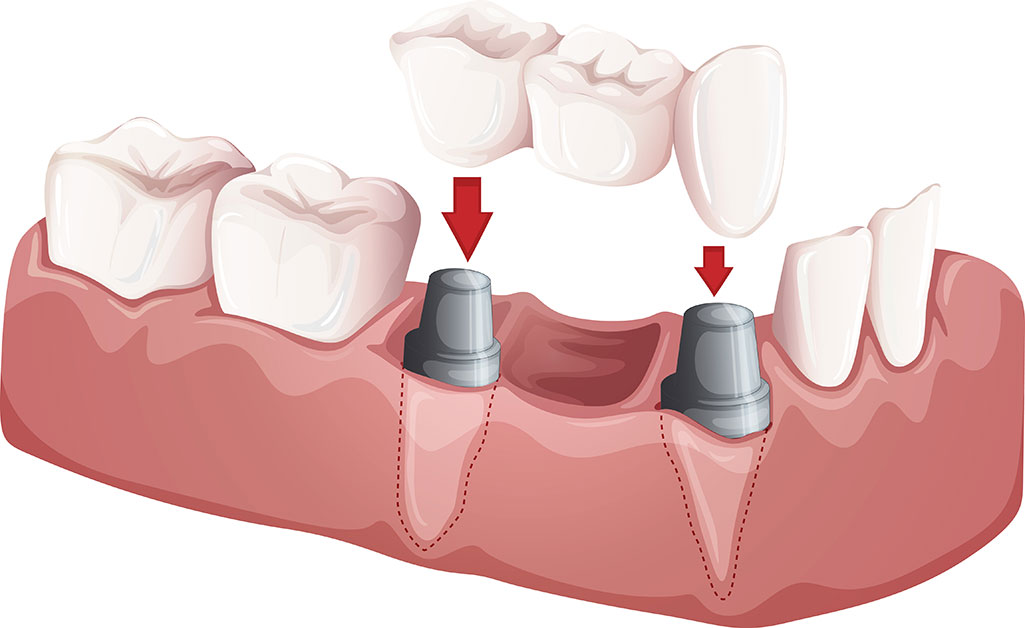Dental Crowns & Bridges

Crowns and bridges work in tandem to help improve the structural integrity and appearance of teeth. Porcelain crowns conform to the shape of the damaged or worn tooth, in effect improving its shape, size, strength, and appearance. Bridges work in coordination with crowns by connecting two crowns that are on either side of a missing tooth. Once the crowns are put into place, the false tooth can then be cemented into the mouth.
The coalescence of bridges and crowns can fortify one’s mouth in ways that mere crowns cannot. Bridges and crowns together enable patients in the San Dimas, La Verne, Glendora, and surrounding communities to improve their smiles, abilities to chew, and the shape of their faces.
Three bridges are available to patients depending on their needs. Traditional bridges entail using a crown on either side of the gap. Cantilever bridges are put to use when only two neighboring teeth need altering. Maryland bonded bridges are constructed out of porcelain and are fused to metal. The porcelain or metal points of the bridge are then bonded to existing teeth.
Porcelain and resin are the two most widely used materials to craft crowns. Porcelain, however, is the preferred material due to its resilience to staining and decay. Porcelain more closely resembles the original appearance of teeth than resin crowns. Porcelain more closely resembles the authentic material of teeth and in effect, functions at a higher level than competing materials.
The installation of bridges and crowns can be a lengthy process that may require several visits to the dentist, along with a period of healing. Before having your porcelain crowns and dental bridges installed, you’ll have to consult with your dentist and figure out how long the procedure will last so that you can make the proper arrangements.
